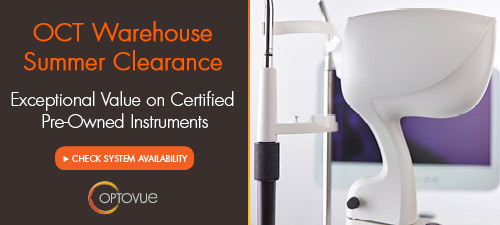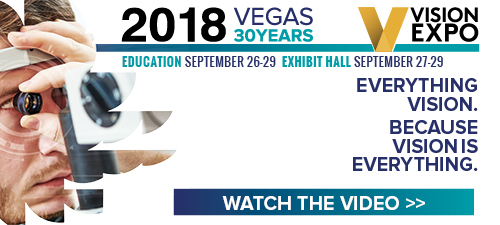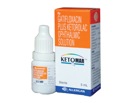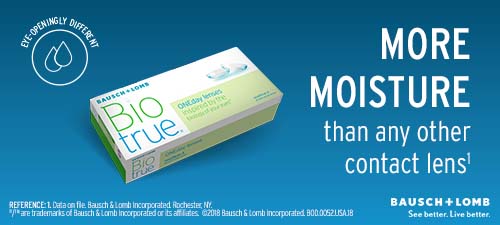
A
weekly e-journal by Art Epstein, OD, FAAO
Off the Cuff: The Big US Prescription Drug Scam
The public continues to seethe over the insane cost of prescription drugs, yet it seems no one has been able to do anything about it. Politicians and an angry public point fingers, but unfortunately, at the wrong culprits.
KETOMAR, a brand name combination of gatifloxacin and ketorolac, which had been prescribed by an Indian eye specialist. Manufactured by Allergan, it is unavailable in the United States, which piqued my curiosity. When I asked her how much it cost, she quickly calculated the currency conversion and said, “about $4.00.” I stared at her in disbelief for a moment as I realized that a bottle of generic gatifloxacin by itself would cost at least ten to 15 times that in the US. Branded Zymaxid lists at almost $200 a bottle on Drugs.com, and that’s after a discount. So how did American health consumers end up so screwed and who gets the blame for it?
|
||||||
 |
||
| Non-Glaucoma Periocular Allergic, Atopic, And Irritant Dermatitis At An Academic Institution | ||||
To better understand the nature of periocular dermatitis (PD) patient presentation, treatment, time-to-cure and referral pattern for allergy testing in an ophthalmic academic center, researchers conducted a retrospective chart review of 344 patients diagnosed with PD between January 1, 2000 and November 30, 2016 at the Edward S. Harkness Eye Institute. Eighty patients were eligible for the study. The primary endpoint was the time-to-cure. Cox proportional hazards regression was performed to assess if there was a significant difference between time-to-cure in patients treated with: 1) combination topical steroid/antibiotic (n = 6) vs. topical steroid alone (n = 40) and 2) combination topical steroid and oral antihistamine (n = 5) vs. topical steroid alone (n = 40). The median age of eligible patients was 57.69, 66.25% of patients were female and 41.25% had a history of atopy. Seven patients in total were referred for allergy testing. A significant difference was found in likelihood of cure when comparing combination topical steroid and oral antihistamine vs. topical steroid alone, adjusting for age and gender. No significance was found when comparing combination topical steroid/antibiotic vs. topical steroid alone. Patients treated with topical steroid and oral antihistamine were approximately four times more likely to experience cure in comparison to patients treated with topical steroids alone. While the majority of patients were not referred for formal allergy testing, this would likely be of benefit. |
||||
SOURCE: Pandit SA, Glass LRD. Non-glaucoma periocular allergic, atopic, and irritant dermatitis at an academic institution: A retrospective review. Orbit. 2018;9:1-7. [Epub ahead of print]. |
||||
 |
||
| Anterior Eye Surface Changes Following Miniscleral Contact Lens Wear | ||||
Twelve healthy subjects (aged 29.9 ± 5.7 years) wore a 16.5mm highly gas-permeable miniscleral contact lens during a 5-hour period to quantify the effect of short-term miniscleral contact lens wear on the anterior eye surface of healthy eyes, including cornea, corneo-scleral junction and sclero-conjuctival area. Corneo-scleral height profilometry was captured before, immediately following lens removal and three hours after lens removal. Topography based corneo-scleral limbal radius estimates were derived from height measurements. In addition, elevation differences in corneal and scleral region were calculated with custom-written software. Sclero-conjuctival flattening within different sectors was analyzed.
Short-term miniscleral lens wear significantly modifies the anterior eye surface. The researchers recorded significant limbal radius increment (mean ± standard deviation) of 146 ± 80μm and flattening of -122 ± 90μm in the sclero-conjuctival area immediately following lens removal. These changes did not recede to baseline levels three hours after lens removal. The greatest anterior eye surface flattening was observed in the superior sector. No statistically significant corneal shape change was observed immediately following lens removal or during the recovery period. Short-term miniscleral contact lens wear in healthy eyes does not produce significant corneal shape changes measured with profilometry but alters sclero-conjuctival topography. In addition, sclero-conjuctival flattening was not uniformly distributed across the anterior eye. |
||||
SOURCE: Consejo A, Behaegel J, Van Hoey M, et al. Anterior eye surface changes following miniscleral contact lens wear. Cont Lens Anterior Eye. Jul 3, 2018. [Epub ahead of print]. |
||||
|
|||
| Additive Effects Of Orthokeratology And Atropine 0.01% Ophthalmic Solution In Slowing Axial Elongation In Children With Myopia: First Year Results | ||||
This study investigated the additive effects of orthokeratology (OK) and atropine 0.01% ophthalmic solution, both of which are effective procedures to slow axial elongation in children with myopia. Japanese children aged eight to 12 years with a spherical equivalent refractive error of -1.00D to -6.00D were included. A total of 41 participants who had been wearing the OK lenses successfully for three months were randomly allocated into two groups to receive either the combination of OK and atropine 0.01% ophthalmic solution (combination group) or monotherapy with OK (monotherapy group). Subjects in the combination group started to use atropine 0.01% ophthalmic solution once nightly from three months after the start of OK. Axial length was measured every three months using non-contact laser interferometry (IOLMaster), and the axial length measurement at month three of OK therapy was used as the baseline value in both groups. The increase in axial length over one year was compared between the two groups.
A total of 40 consecutive subjects (20 subjects in the combination group and 20 in the monotherapy group) were followed for one year. The increase in axial length over that year was 0.09 ± 0.12mm in the combination group and 0.19 ± 0.15mm in the monotherapy group. During the one-year follow-up, the combination of OK and atropine 0.01% ophthalmic solution was more effective in slowing axial elongation than OK monotherapy in children with myopia. |
||||
SOURCE: Kinoshita N, Konno Y, Hamada N, et al. Additive effects of orthokeratology and atropine 0.01% ophthalmic solution in slowing axial elongation in children with myopia: first year results. Jpn J Ophthalmol. Jul 4, 2018. [Epub ahead of print]. |
||||
 |
||
| News & Notes | ||||||||
Allergan Introduces New Refresh Repair Lubricant Eye Drops |
||||||||
FDA Accepts B+L’s Loteprednol Etabonate Ophthalmic Gel, 0.38% NDA
|
||||||||
| MPOD Measurement Earns American Medical Association CPT III Code EyePromise announced that the macular pigment optical density measurement by heterochromatic flicker photometry earned a category III CPT code from the American Medical Association. The code, which doesn’t receive paid reimbursement, is used for data collection and tracking for products or services involved in planned or ongoing research to help researchers substantiate widespread usage and efficacy. Read more. |
||||||||
| MacuLogix Appoints Lee as Director of Professional Relations MacuLogix announced that Amanda K. Lee, OD, joined MacuLogix as director of professional relations. Dr. Lee will focus on advancing the standard of care for age-related macular degeneration to improve patient outcomes. Prior to joining the company, Dr. Lee served as vice president/COO/co-owner of Vision Source at Seaside Eye Associates in Myrtle Beach, S.C., as well as an administrator in South Carolina for Vision Source. She is a member of the South Carolina Optometric Physicians Association and has been a member of the American Optometric Association for the past 25 years. Read more. |
||||||||
| Envision Hosts Annual Level Up Conference Envision held its annual Level Up High School Conference at Wichita State University Tuesday, June 26 through July 1. Fifty-seven high school students who are blind or visually impaired representing seven states participated, attending sessions relating to art, music, STEM (science, technology, engineering, mathematics), interpersonal and self-advocacy skills, career planning and other topics, as well as a college, career and resource expo. Free computers and assistive technology were made available to participants as well as training to help master both. Read more. In addition, the 2018 Envision-Atwell Award for research in low vision and low vision rehabilitation was presented last month to Yingzi Xiong, a research associate from the University of Minnesota’s Minnesota Lab for Low Vision Research. Xiong received the award, which includes a $1,000 stipend and a trophy, at a gathering of the Low Vision Research Group during the 2018 Annual Meeting of the Association for Research in Vision and Ophthalmology (ARVO) in Honolulu. Read more. |
||||||||
| Alimera Appoints Szela to Board Alimera Sciences announced that Mary T. Szela, chief executive officer and president of Surefire Medical, joined its board of directors. Prior to joining Surefire, Szela served as CEO of Novelion Therapeutics, where she orchestrated the merger of Aegerion Pharmaceuticals and QLT Therapeutics. Before that, she was CEO of Melinta Therapeutics. Szela also held management positions at Abbott Laboratories, including president of the company's $8 billion U.S. pharmaceutical business. She developed global brands such as Humira and served as vice president for global strategic marketing and services. Read more. |
||||||||
|
||||||||
|
Optometric Physician™ (OP) newsletter is owned and published by Dr. Arthur Epstein. It is distributed by the Review Group, a Division of Jobson Medical Information LLC (JMI), 11 Campus Boulevard, Newtown Square, PA 19073. HOW TO ADVERTISE |




